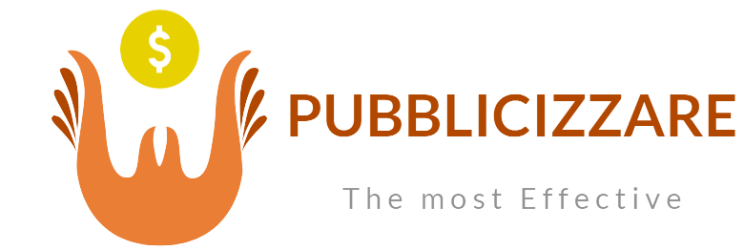Nasal allergies affect millions worldwide, disrupting daily life with symptoms like constant sneezing, congestion, itchy eyes, and a runny nose. While they may not be life-threatening, allergies can significantly reduce quality of life if not managed properly. Identifying and avoiding common triggers is often the first step toward lowering flare-ups and controlling symptoms.
Finding the right nasal allergy treatment can bring relief, but prevention is equally important. By recognizing what sets off your allergic reactions, you can make simple adjustments in your surroundings, diet, and lifestyle to avoid unnecessary discomfort. This blend of treatment and prevention helps manage allergies more effectively in the long run.
Consulting experts at the best ENT hospital in Vadodara or your local area ensures proper diagnosis and guidance. Doctors can help patients understand their unique triggers through allergy testing and create a customized plan to reduce exposure and improve overall health.
Understanding What Causes Nasal Allergies
Nasal allergies, often called allergic rhinitis, occur when the immune system overreacts to harmless environmental substances. Instead of ignoring these substances, the immune system treats them like harmful invaders, releasing histamines and other chemicals that cause symptoms.
These allergens can be found indoors and outdoors, making it difficult to avoid them altogether. While some triggers are seasonal, like pollen, others, such as dust mites, are present year-round. The severity of symptoms depends on the level of exposure, individual sensitivity, and overall health condition.
By identifying the specific causes behind allergic reactions, patients can adopt practical measures to minimize contact with triggers and find long-term relief.
Pollen: The Seasonal Trigger
One of the most common culprits behind nasal allergies is pollen. Plants release pollen into the air during their reproductive cycle, which can trigger an allergic response when inhaled. Seasonal allergies, often called hay fever, are especially common during spring and fall when pollen counts are high.
Familiar sources of pollen include:
- Trees such as oak, birch, and cedar
- Grasses like ryegrass and Bermuda grass
- Weeds, including ragweed and sagebrush
Individuals sensitive to pollen may notice worsening symptoms outdoors during peak pollen hours, usually in the early morning or late afternoon. Keeping windows closed, using air purifiers, and showering after outdoor activities can reduce exposure.
Dust Mites: Hidden Indoor Allergens
Unlike pollen, which is seasonal, dust mites are year-round triggers that thrive indoors. These microscopic organisms live in bedding, carpets, upholstered furniture, and curtains. Their waste particles become airborne and can easily be inhaled, causing allergic reactions.
To minimize dust mite exposure:
- Wash bedding in hot water weekly.
- Use allergen-proof covers on mattresses and pillows.
- Reduce indoor humidity with dehumidifiers.
- Vacuum carpets and upholstery regularly with HEPA filters.
Since dust mites are nearly impossible to eliminate, reducing their population and exposure becomes key in controlling symptoms.
Pet Dander and Animal Allergies
For animal lovers, pet dander can be a significant allergy trigger. Cats and dogs shed tiny skin flakes, saliva proteins, and urine particles that can cause allergic reactions when inhaled. Even pets considered hypoallergenic may still produce dander that affects sensitive individuals.
If removing a pet from the home is not an option, steps can be taken to manage exposure:
- Keep pets out of bedrooms and off furniture.
- Bathe pets regularly to reduce dander levels.
- Use HEPA air filters to trap allergens.
- Wash your hands after handling pets.
It’s worth noting that even when pets are absent, dander can cling to clothing and spread into different environments.
Mold Spores and Damp Environments
Mold is another frequent trigger for nasal allergies, particularly in damp or humid environments. Mold spores are airborne and, once inhaled, can cause persistent allergy symptoms. Common areas where mold thrives include bathrooms, kitchens, basements, and anywhere moisture is trapped.
To limit mold exposure:
- Fix water leaks immediately.
- Ensure good ventilation in bathrooms and kitchens.
- Clean surfaces with mold-killing solutions.
- Use dehumidifiers in damp spaces.
Seasonal mold growth outdoors, such as on fallen leaves, can also worsen allergies. Wearing a mask while gardening or cleaning outdoor spaces can reduce exposure.
Smoke, Pollution, and Strong Odors
While not allergens in the traditional sense, irritants like cigarette smoke, car exhaust, and strong odors can worsen nasal allergy symptoms. These substances irritate nasal passages, making them more sensitive to allergens and causing flare-ups.
Common irritants include:
- Cigarette and cigar smoke
- Household cleaning chemicals
- Perfumes and scented candles
- Industrial fumes
Avoiding exposure to these irritants whenever possible helps reduce allergic discomfort. Smokers are encouraged to quit, not only for allergy relief but also for overall health benefits.
Food and Dietary Triggers
Although less common, certain foods can trigger or worsen nasal allergy symptoms. Some individuals experience cross-reactivity, where the immune system mistakes food proteins for pollen proteins. For example, people allergic to birch pollen may react to apples, carrots, or nuts.
Keeping a food diary and consulting a healthcare professional can help identify and manage these triggers. Avoiding problematic foods during allergy season may prevent worsening symptoms.
Conclusion
Nasal allergies are a daily struggle for many, but identifying and avoiding common triggers can dramatically improve quality of life. From seasonal pollen to indoor dust mites, mold spores, and pet dander, awareness of these culprits empowers individuals to take preventive action. Environmental irritants and certain foods can also contribute, making it essential to take a holistic approach to allergy management.
Pairing prevention strategies with the right treatment ensures that symptoms are controlled effectively. With expert care at the best ENT hospital, patients can receive personalized guidance tailored to their unique triggers. Combining medical support with everyday preventive measures allows breathing easier, living more comfortably, and preventing allergies from controlling your life.


